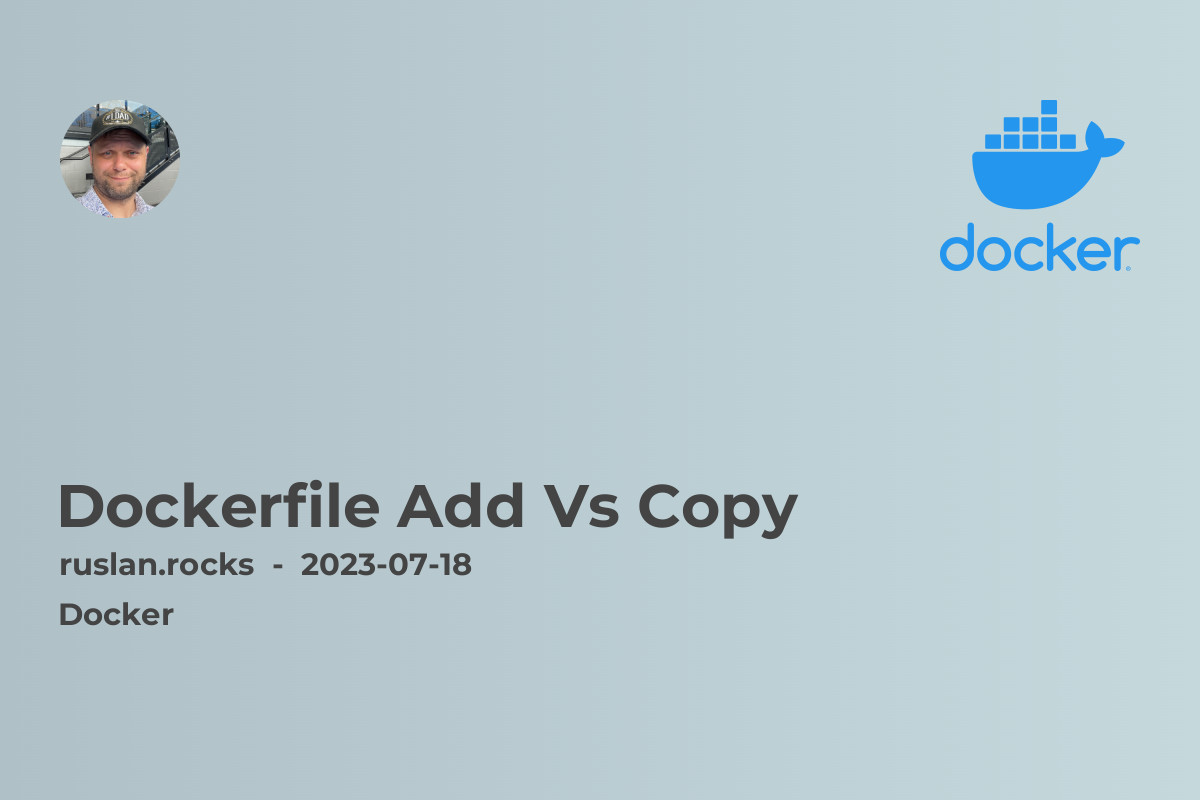Dockerfile Add Vs Copy: A Comparison and Best Practices

In this article, we will explore the differences between the ADD and COPY instructions in Docker's Dockerfile. Both instructions are used to copy files and directories into the Docker image during the build process. Understanding when to use each instruction is crucial for optimizing image size, build time, and overall container performance.
What is the Difference Between ADD and COPY in Docker?
The main difference between the ADD and COPY instructions lies in the way they handle files and directories.
The COPY instruction simply copies files and directories from the build context or a specific path on the host machine into the container's filesystem. It can copy multiple files and directories and is generally recommended for most use cases. Here is an example:
COPY app.js /app/
On the other hand, the ADD instruction has additional features compared to COPY. In addition to copying files and directories, it also supports automatic unpacking of tar files and fetching remote URLs. This versatility comes with some caveats, as the ADD instruction adds complexity and potential security risks. Here is an example:
ADD http://example.com/file.tar.gz /app/
Best Practices for Using COPY
When it comes to selecting between COPY and ADD, it is generally recommended to use the COPY instruction unless you specifically need the additional capabilities of the ADD instruction. Here are some best practices for using COPY effectively:
-
Specify the most specific source path possible to minimize the size of the build context. For example, instead of
COPY . /app/, consider usingCOPY package.json /app/followed byCOPY src /app/src/. -
When copying directories, use trailing slashes to indicate that the source is a directory and not a file. For example,
COPY src/ /app/src/. -
If you want to copy multiple files or directories, use wildcards. For example,
COPY *.txt /app/orCOPY src/**/*.js /app/src/. -
Avoid copying unnecessary files or directories into the image. Exclude build artifacts, development files, and other files that are not required for runtime.
Best Practices for Using ADD
While the COPY instruction is usually sufficient for most use cases, there are scenarios where the ADD instruction is necessary. Here are some best practices for using ADD effectively:
-
Only use the
ADDinstruction when you specifically need its additional features, such as unpacking tar files or fetching remote URLs. -
Be cautious when using the
ADDinstruction with remote URLs, as it can introduce potential security risks. Always download files from trusted sources and verify their integrity. -
To preserve the ordering of layers and improve cache utilization, prefer using multiple
COPYinstructions instead of a singleADDinstruction with multiple sources. -
When using the
ADDinstruction with tar files, ensure that the files are properly compressed and organized within the tar archive to prevent unexpected behaviors.
Internal Links to Related Articles
Here are some articles on our website that are closely related to the topic of Dockerfile instructions:
-
What Is Docker: Learn about the basics of Docker and how it revolutionizes application deployment.
-
Docker Images List: Understand how to list Docker images and manage them effectively.
-
Docker Networking - How To Connect Containers: Explore different networking options and techniques for connecting Docker containers.
-
Docker Security Best Practices: Learn about best practices for securing your Docker containers and images.
By exploring these articles, you can expand your knowledge and gain a more comprehensive understanding of Docker and its ecosystem.
Remember, when it comes to choosing between the ADD and COPY instructions in your Dockerfile, consider the specific requirements of your project. Use the COPY instruction as the default choice, and only resort to ADD when its additional features are necessary. Following these best practices will help you optimize your Docker images and improve the efficiency of your containerized applications.

